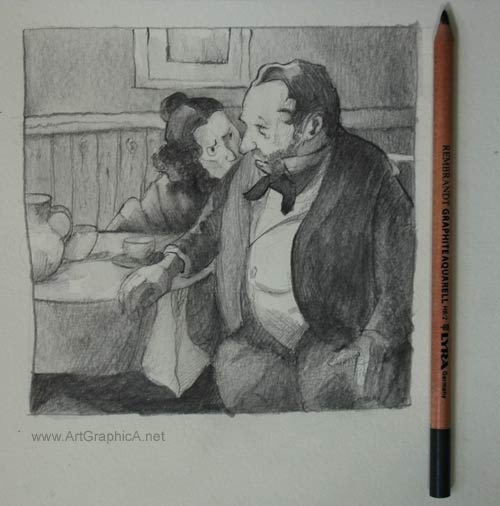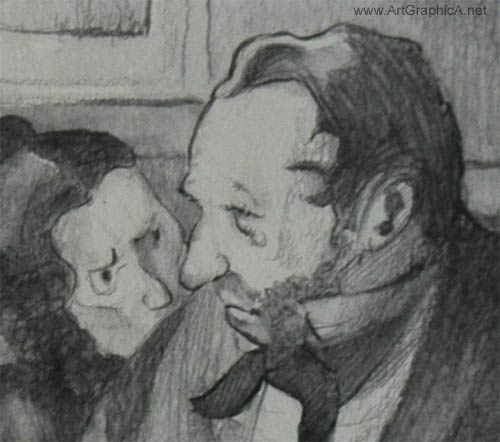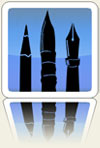Water soluble pencil sketching after Wilhelm Busch
Wilhelm Martin Busch was probably one of the most brilliant sketchers and draftsman I’ve come across, with a wonderful imagination and command of line, able to draw almost anything that came into his imagination. Before Busch passed away in 1987, he had illustrated some 300 books.
To properly appreciate Wilhelm Busch’s abilities and wonderful treatment of line and gesture, the Animation Treasures blog features hundreds of scans.
It’s humbling to attempt imitation of someone so masterful, but it’s only in practicing from great paintings and drawings that we improve. I made a quick sketch based on one of Busch’s own sketches (I believe the original might have been conducted in ballpoint pen), using watersoluble pencils. I recently acquired (actually they arrived today) some Rembrandt Aquarell pencils, that are available in HB, 4B and 8B, so why not kill two birds with one stone – massacre a Busch and use a new medium!
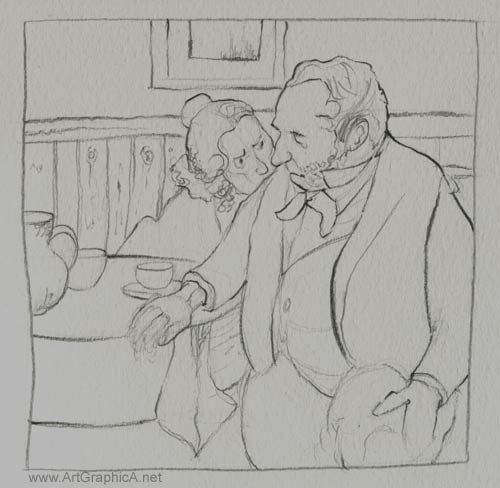
This was done in a moleskin watercolour book – it’s quite textured so not great for pencil drawing, but still usable. The sketch was roughed in with a 2B Derwent graphic pencil, as I wasn’t sure if it would wash away when I added water.
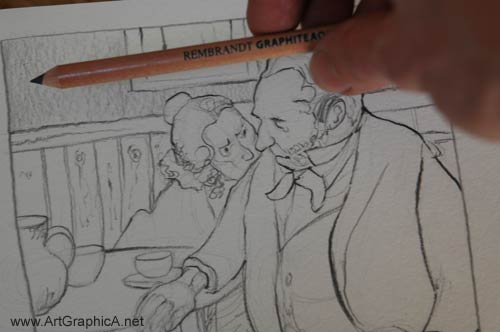
In the next stage I used the edge of the HB Rembrandt GraphiteAquarell and started to lay in some tones. It’s very textured due to the grain of the paper.
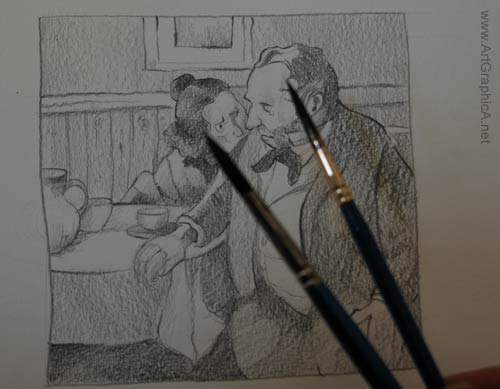
The darker tones were laid in with an 8B water soluble pencil.
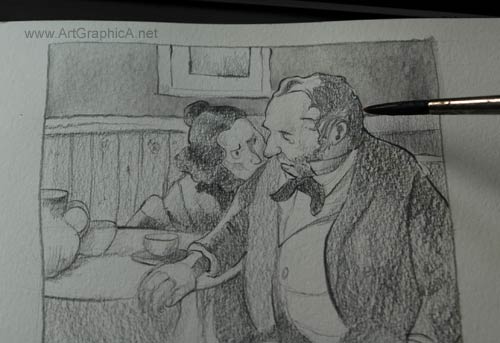
The moment of truth – how will the graphite respond! I’m guessing the graphite is mixed with gum arabic in order to make it susceptible to water washes?
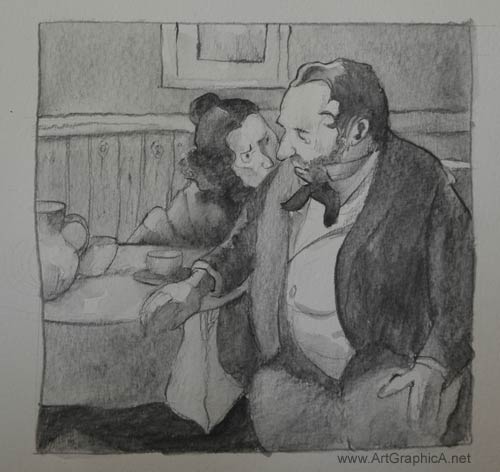
Well it seems to work quite well. It’s a like a cross between blending with a stump and using watercolour. There’s still enough texture from the paper to make it
interesting, but the brush fills in the weaves so that it’s not overly granulated. I found it best to run the brush over the graphite one or two times at most in order to keep the tones quite smooth.
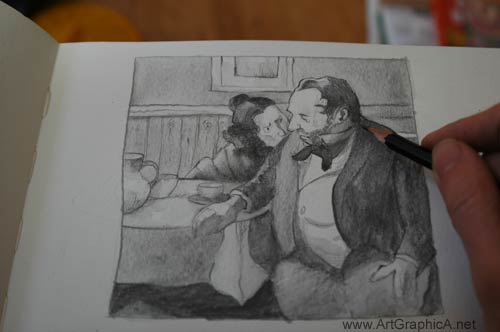
I returned to my 2B Derwent Graphic pencil which isn’t watersoluble, and added some lines to slightly improve the tones and bring back a little more texture. Overall it’s a nice way to sketch quickly and without having to labour over building up tones. The dark tones can be built up straight away with an 8B, and smoothed out with a watery brush – I would imagine only photorealists would be picky about its use.
